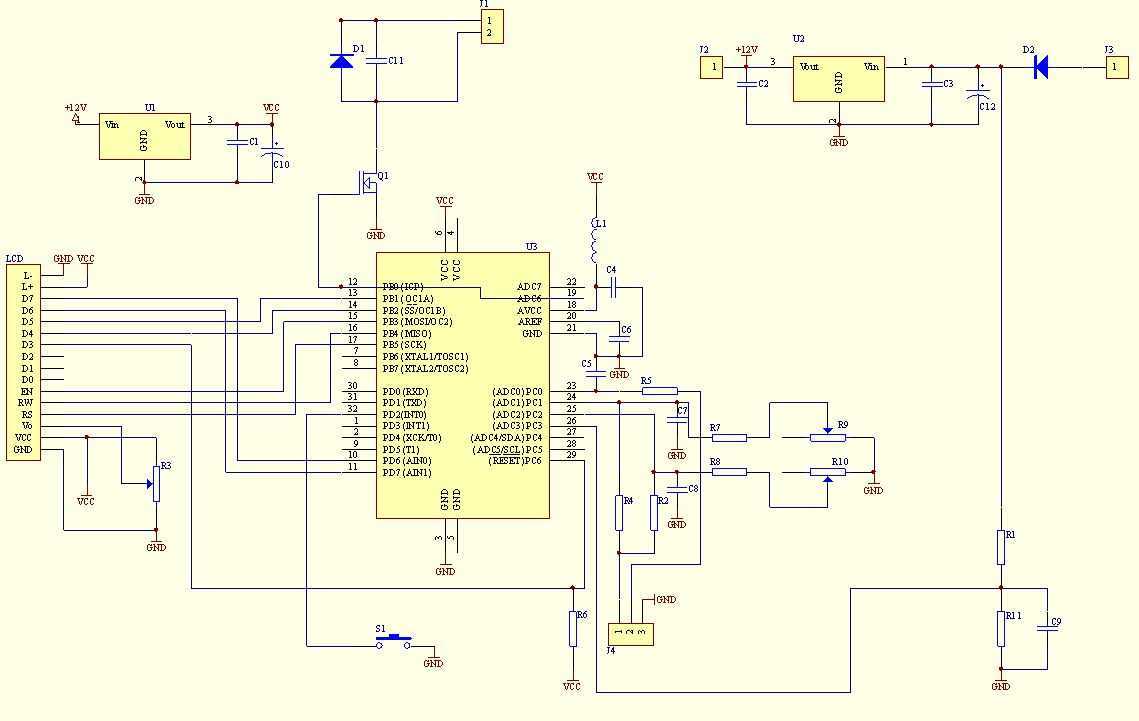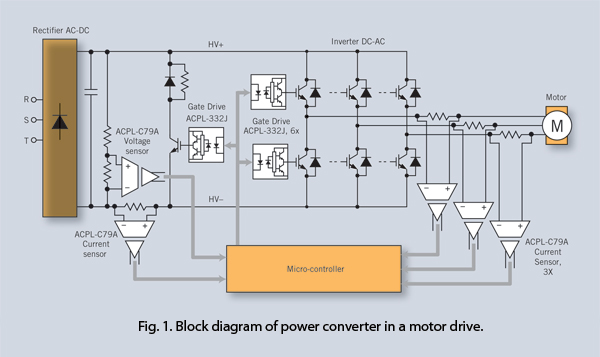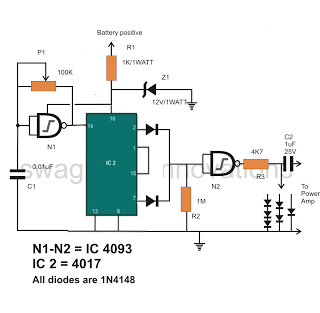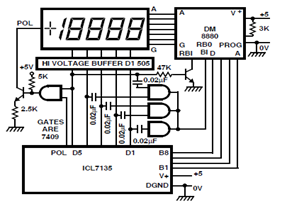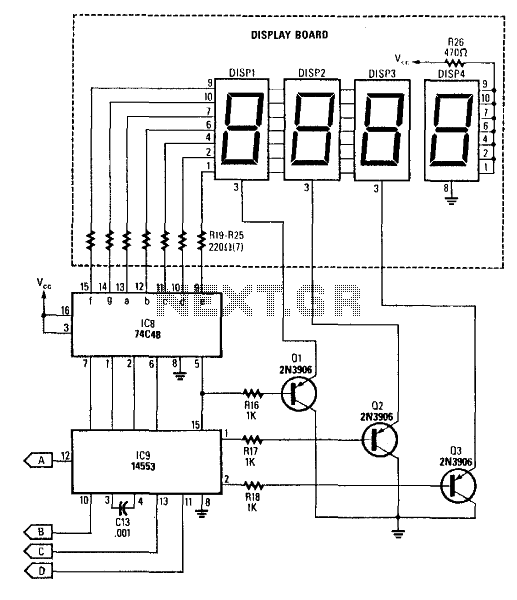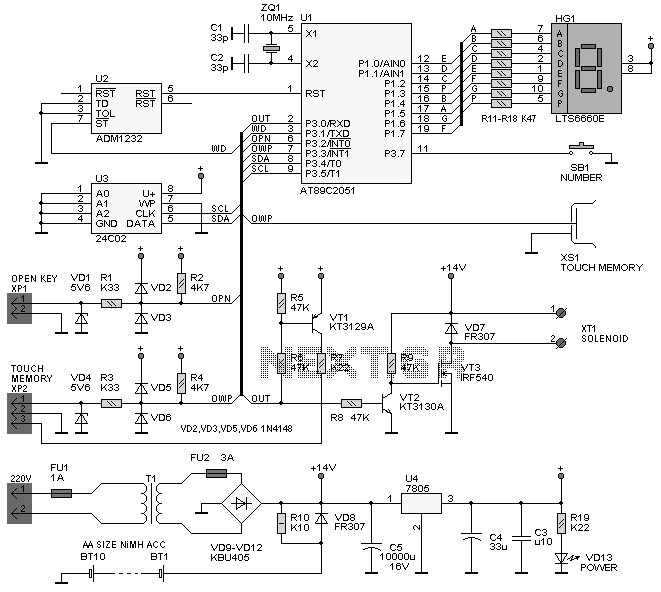
8-direction Digital Compass Using Z8 Encore
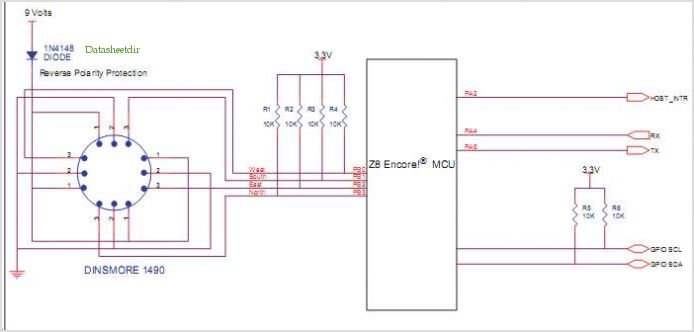
The M-8880 is a complete DTMF Transmitter/Receiver that features adjustable guard time, automatic tone burst mode, call progress mode, and a fully compatible 6500/6800 microprocessor interface. The receiver portion is based on the industry-standard M-8870 DTMF Receiver, while the transmitter utilizes a switched-capacitor digital-to-analog converter for low-distortion, highly accurate DTMF signaling. Tone bursts can be transmitted with precise timing by utilizing the automatic tone burst mode. To analyze call progress tones, a call progress filter can be selected by an external microprocessor from Clare, Inc.
The M-8880 device serves as a versatile solution for DTMF (Dual-Tone Multi-Frequency) signaling applications. It integrates both transmission and reception functionalities, making it suitable for various telecommunication systems. The adjustable guard time feature allows users to define the duration during which the system waits for a valid tone signal before processing, thus enhancing the reliability of tone detection.
The automatic tone burst mode is particularly beneficial for applications requiring the transmission of short bursts of DTMF tones with high precision. This mode ensures that the timing of the tone bursts is consistent, which is critical for effective communication in automated systems. The use of a switched-capacitor digital-to-analog converter in the transmitter section contributes to the low distortion and high accuracy of the transmitted DTMF signals, ensuring clear and reliable tone generation.
In addition to its transmission capabilities, the M-8880's receiver section leverages the well-established M-8870 DTMF receiver architecture, which is recognized for its robustness and efficiency in decoding DTMF signals. The device also includes a call progress mode, allowing it to detect and analyze various call progress tones, which can be essential for monitoring call status in telephony applications.
The integration of an external microprocessor interface compatible with the 6500/6800 series allows for enhanced functionality and flexibility. By selecting a call progress filter through the microprocessor, users can tailor the system's response to specific tone frequencies, thus optimizing performance for different operational requirements.
Overall, the M-8880 provides a comprehensive solution for DTMF signaling, combining advanced features and compatibility with existing microprocessor systems, making it a valuable component in modern telecommunications engineering.TheM-8880 is a completeDTMF Transmitter/Receiver that fea- tures adjustable guard time, Automatic Tone burst mode, call progressmode, and a fully compatible 6500/6800microproces- sor Interface The receiver portion is based on the industry stan- dard M-8870 DTMF Receiver, while the transmitter uses a switched-capacitor digital-to-analog converter f or low-distortion, highly accurateDTMF signaling. Tone bursts CAN be transmitted with precise Timing by making use of the auto- matic Tone burst mode. To analyze call progress Tones a call progress Filter CAN be selected by an external Microprocessor By Clare, Inc. 🔗 External reference
The M-8880 device serves as a versatile solution for DTMF (Dual-Tone Multi-Frequency) signaling applications. It integrates both transmission and reception functionalities, making it suitable for various telecommunication systems. The adjustable guard time feature allows users to define the duration during which the system waits for a valid tone signal before processing, thus enhancing the reliability of tone detection.
The automatic tone burst mode is particularly beneficial for applications requiring the transmission of short bursts of DTMF tones with high precision. This mode ensures that the timing of the tone bursts is consistent, which is critical for effective communication in automated systems. The use of a switched-capacitor digital-to-analog converter in the transmitter section contributes to the low distortion and high accuracy of the transmitted DTMF signals, ensuring clear and reliable tone generation.
In addition to its transmission capabilities, the M-8880's receiver section leverages the well-established M-8870 DTMF receiver architecture, which is recognized for its robustness and efficiency in decoding DTMF signals. The device also includes a call progress mode, allowing it to detect and analyze various call progress tones, which can be essential for monitoring call status in telephony applications.
The integration of an external microprocessor interface compatible with the 6500/6800 series allows for enhanced functionality and flexibility. By selecting a call progress filter through the microprocessor, users can tailor the system's response to specific tone frequencies, thus optimizing performance for different operational requirements.
Overall, the M-8880 provides a comprehensive solution for DTMF signaling, combining advanced features and compatibility with existing microprocessor systems, making it a valuable component in modern telecommunications engineering.TheM-8880 is a completeDTMF Transmitter/Receiver that fea- tures adjustable guard time, Automatic Tone burst mode, call progressmode, and a fully compatible 6500/6800microproces- sor Interface The receiver portion is based on the industry stan- dard M-8870 DTMF Receiver, while the transmitter uses a switched-capacitor digital-to-analog converter f or low-distortion, highly accurateDTMF signaling. Tone bursts CAN be transmitted with precise Timing by making use of the auto- matic Tone burst mode. To analyze call progress Tones a call progress Filter CAN be selected by an external Microprocessor By Clare, Inc. 🔗 External reference
